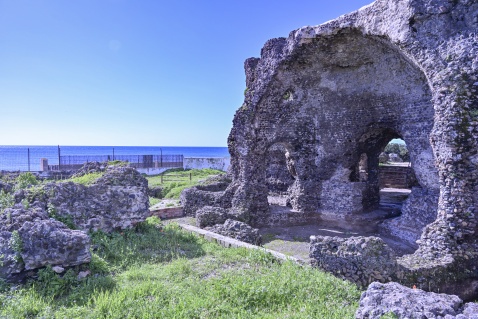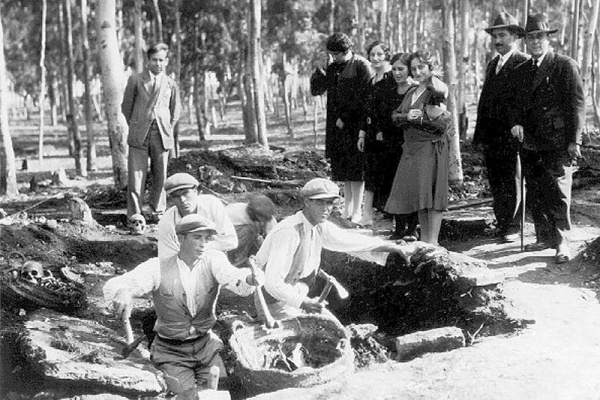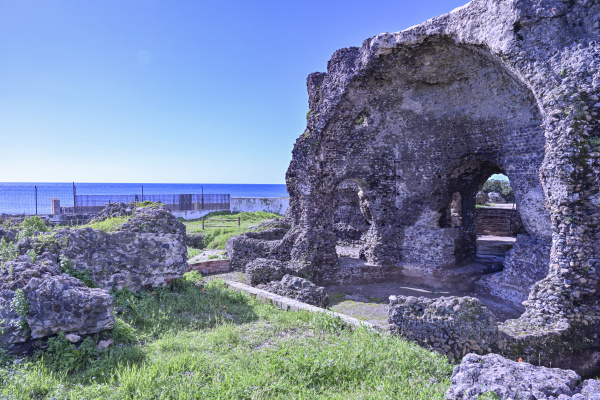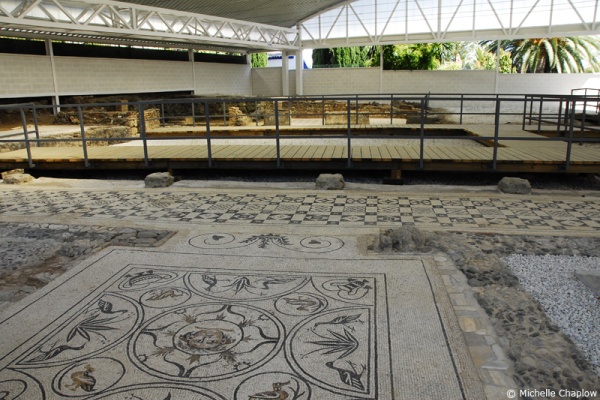
Ancient Echoes: The Roman Baths of San Pedro, Marbella – A Glimpse into Spain’s Imperial Past |
|
Las Bovedas - Roman Bath Houses Marbella
The ruins of the Roman baths, dating from the 3rd century AD, are one of the most important of their kind in Spain. They are located next to the beach, south-west of the mouth of the Guadalmina River. They are part of the Guadalmina Baja urbanisation. The baths date back to the 3rd century AD and were first discovered as Roman in 1930.
These Roman baths are the closest to those found in the city of Cádiz, which increases their importance. These ruins suggest that they could be part of the Roman town of Cilniana, the location of which has never been established with certainty.
The solid mortar structure has withstood the passing of time and the elements well, especially given its proximity to the beach. The baths are mainly made of whitewashed mortar and brick, with marble facing in some areas. They have a vaulted roof, two floors and underground water heating. The limestone comes from the Torcal quarry in Antequera, 120 kilometres away.
The structure is built around a central octagonal room, 9.75 metres in diameter, into which visitors today can enter. The central room had a large domed roof, of which the centre part has collapsed. In the centre of the central room, which has undergone the most changes in its history due to its various post Roman uses, there is a 1.2 metre deep octagonal plunge pool. The floor was originally covered with mosaic tiles. Some of the tiles can still be seen in the northern doorway. The upper floor forms of a circular gallery with access to several small rooms.
The central room or core is surrounded by seven octagonal rooms, five of which were interconnected and two of which are only entered from the main chamber. There were two hot pool rooms fed from the water heating system. Water was then channeled to the two warm rooms and after to the two cold cold rooms. All side rooms are also octoganal in shape. From the cold pools ther eis a drain, that you can see outside, leading to the beach.
The baths were in use until the 5th century AD. The entire archaeological site covers an area of almost 7,000 square metres.
Discovery
The first documentary reference to 'Las Bóvedas' is Anton Van der W's drawing of the coastline from the sea, which clearly shows the Bovedas in 1567. A later reference is that of the historian Macario Fariñas del Corral, who wrote in 1663: "This place seems to be some Roman ruins located two leagues from Marbella on the way to Gibraltar. They call it the vaults because there are some aqueducts more than half a league long under the ground'. In 1782, in his 'Diario del Viaje de Andalucía y Portugal', Francisco Pérez Bayer describes 'Las Bóvedas' as 'an octagonal building made of small stones, but mixed with sand and lime to form a very hard concrete'. Richard Ford's famous 1844 'The handbook for travellers in Spain' also mentions the nearby aqueduct.
José María Martínez Oppelt, an engineer with the Sociedad Colonia de San Pedro Alcántara (Agricultural Cooperative Society), carried out the first archaeological excavations in 1915 and 1916 at several sites on their land. Further excavations were carried out by the archaeologist José Pérez de Barradas, who in 1930 was the first to write about Las Bóvedas (The Domes), a Roman construction that he believed to be a reservoir to supply the town of Cilniana with water for drinking and for salting fish.
It was later proved that the Bovedas were a thermal building from the 3rd century AD, one of the best preserved from that period. Garum (fish paste) factories and walls of other buildings with tegulas and imbrexes have also been found in the same area. The imbrex and tegula were overlapping roof tiles used in ancient Greek and Roman architecture as a waterproof and durable roofing material.
La Torre de las Bóvedas
Torre de los Bovedas is the watchtower adjacent to the baths.
Opening Hours
Saturday and Sunday 09.00 to 11.00 hrs
Note the nearby La Basilica de Vega del Mar was a Paleo-Christian (early Christian) church and necropolis (burial site) is open just afterwards from 11.15 to 14.00 so the sites may be visited together.
Entry
It is free to view the site
Location
Urb. Linda Vista Playa, Calle Eucaliptos, San Pedro de Alcántara, Marbella.
Location
Visit the site by driving to Guadalmina Baja and parking car at end of Calle C3. The visit can be conbined with a visit to just afterwasds to La Basilica de Vega del Mar by walking along the coastal path, footbridge across the Arroyo del Chopo. Alternatively driving through Guadalmina Baja and Nueva Alcantara.
Urbanización Guadalmina Baja, Calle C3, 29670, San Pedro Alcántara, Marbella Hours:






